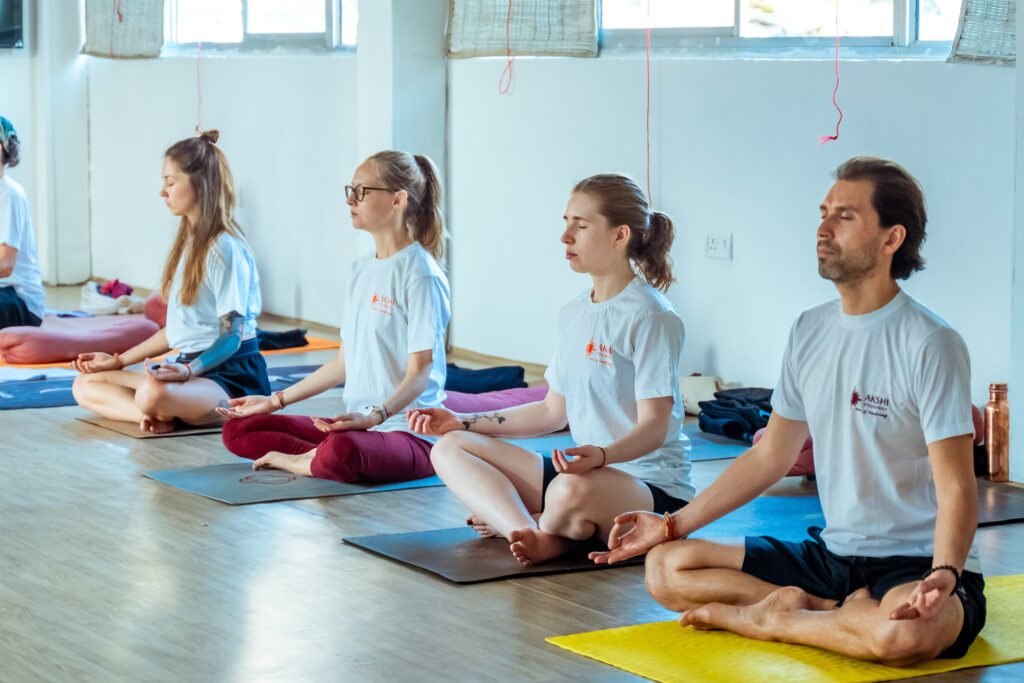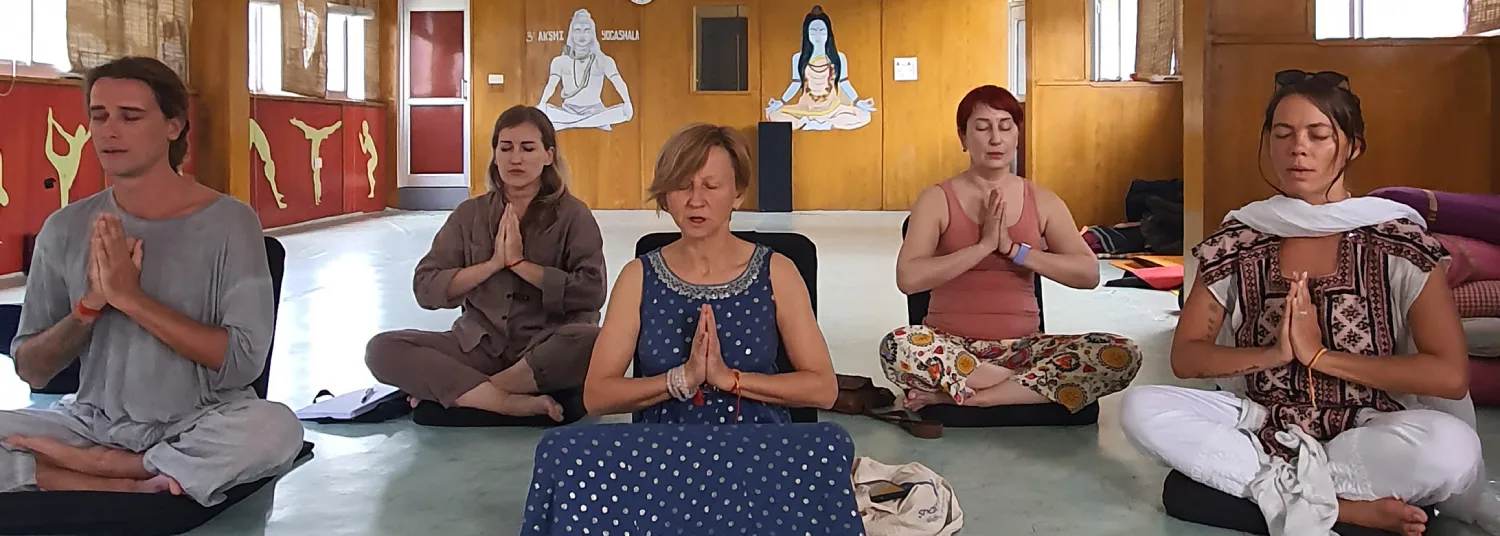Welcome to a journey of transformation! You should try Padmasana often because this yoga posture can assist you when stress holds your mind down or when your digestive system needs help. tâyoga posture from the ancient times serves as an advanced body posture which fortifies digestive health while facilitating inner tranquility and mental concentration. The following blog explores the extensive personal benefits that Padmasana practice brings to both yoga practice and daily life functions. Prepare to discover ancient secrets of this eternal pose which reveals both physical and mental advantages for personal wellness because your path to wellbeing begins from deep inside yourself.
Introduction to Padmasana (Lotus Pose)
In the fast-paced world we live in, finding moments of tranquility can feel like a luxury. Enter Padmasana, or Lotus Pose—a timeless yoga posture that transcends mere physical practice. This sacred pose invites you to cultivate not only flexibility but also profound inner peace and sharp mental focus. Imagine sitting comfortably with your legs crossed, your spine aligned, and a sense of calm washing over you as you breathe deeply. The benefits of Padmasana extend far beyond the mat; they ripple into your daily life, enhancing everything from your digestion to your emotional well-being.
Whether you’re an experienced yogi or just beginning your journey, embracing Padmasana might be exactly what you need to transform both body and mind. Let’s explore how this ancient position can lead you toward better health and greater clarity in today’s chaotic environment.
The History and Origin of Padmasana
Padmasana, or Lotus Pose, has deep roots in ancient Indian culture. Its origins trace back thousands of years to sacred texts and spiritual practices.
The pose is often depicted in Hindu and Buddhist art. It symbolizes purity and tranquility, making it a favored position for meditation among yogis. Many believe that practicing Padmasana helps connect the mind with the divine.
Historically, this posture was taught by revered sages who explored transcendental states through yoga. They discovered that sitting cross-legged promotes stability and comfort during long periods of meditation.
As yoga spread across cultures, Padmasana retained its significance as a cornerstone of practice. Today, it’s embraced globally not just for its aesthetic beauty but also for the profound benefits it offers practitioners seeking inner peace.
Physical Benefits of Padmasana for Digestive Health
Padmasana which is also known as Lotus Pose serves as more than a meditation position because it brings direct benefits to digestive wellness. The abdominal organs become stimulated through proper maintenance of this pose. Light compression through this position allows blood to flow better as well as digestive processes to function more efficiently.
The act of sitting in Padmasana brings relief to digestive issues which includes elimination problems and gas. The pose activates the hips through opening motions that release lower body tension which brings positive effects to the human body.
Your spine alignment combined with proper posture during practice creates space in your body that allows your digestive system to perform correctly. The practice of deep breathing in Padmasana position allows free oxygen passage that benefits digestive functions across your body.
Your practices that contain Padmasana will lead to an improved overall gut health environment. Performing this historical Yoga posture represents an opportunity to gain both physical benefits and mental awareness that will affect better food selection habits.

Mental and Emotional Benefits of Padmasana for Relaxation and Inner Peace
The Lotus Pose known as Padmasana functions beyond its appearance as an approach to achieve serenity. Your body achieves peace first after you enter this pose which creates similar restfulness within your mind.
Sitting cross-legged leads people toward a grounded state. This connection with the earth fosters stability in both thoughts and emotions. Focused attention deepens your breath pattern which leads to stress elimination.
Through Padmasana practice individuals can route themselves toward the practice of mindful awareness. This technique enables observers to watch their thoughts move by without making judgments which increases their emotional understanding. Stillness created in this position reveals deep self-knowledge to you.
Persons who practice this posture regularly create greater resistance to daily life stresses. Your ability to face obstacles improves because of an inner peace which spreads toward others.
Padmasana provides mental sanctuary together with emotional stability during the challenges of daily life.
How Padmasana Can Improve Focus and Increase Mental Clarity
Padmasana otherwise known as Lotus Pose represents more than aesthetic value. The particular posture functions as an effective method to develop mental clarity and focus. The Lotus Pose creates an optimal space for concentration because it allows your body to find stability.
The natural alignment of your body will happen when you sit in Padmasana. The body’s proper alignment results in enhanced bloodstream circulation which provides better oxygen supply to the brain tissue. The disappearance of distractions helps your mind develop greater focus.
Your practice in this pose will foster an awareness that leads to meditation. Continued practice reveals that you naturally develop the ability to release your thoughts from racing. The present moment takes over your scattered thoughts making them focused.
A practice of Padmasana produces inner calm essential for deep contemplation and increased insights. Intentional pose maintenance allows your mental pathways to increase clarity as time extends. Experience the peaceful essence of this pose to reach heightened awareness which modern societies actively seek during this period.
Step-by-Step Guide to Practicing Padmasana
Start by selecting a quiet area to sit with a comfortable posture. Place yourself on a solid surface backed with a yoga mat to maintain stability.
Stretch both legs directly in front of your body. Keep your spine straight as you relax your shoulders while using an upright sitting posture.
The second step requires bending a knee and pulling that foot towards the opposite thigh. Position the foot soles on the inside of your thighs but maintain an extended position for the other foot.
Move to the next leg and extend it over the first one to cross both feet onto different thighs. The lack of flexibility allows you to either leave one foot grounded or support yourself with cushions.
Particles of the universe become visible when you should position your hands either on your knees or in your preferred mudra,< /em> Guide your attention to your breathing by softly shutting your eyes.
Perform this position keeping your mind calm yet alert while deep breathing evenly through the entire pose.
Modifications and Variations of Padmasana for Different Body Types and Levels of Flexibility
Lotus Pose known as Padmasana exists in different variations to accommodate people of all body types and flexibility capabilities. Your practice will be more fulfilling as you understand your specific requirements.
People who face challenges with their hip or knee flexibility should support their thighs with blocks and cushions as they practice the Lotus Pose. Using this adjusted position allows you to decompress from the pose’s discomfort even though it provides the fundamental essence of the yoga posture.
The Lotus Pose in its full form may be too challenging so practitioners should move toward practicing the Half Lotus stance. Select a seated position that puts one foot on your upper thigh while extending the remaining leg forward. The modified stance delivers similar advantages and achieves proper body positioning.
When seated cross-legged position (Sukhasana) does not work another less-strenuous alternative exists. There is a milder form of this position which allows people of all skill levels to feel comfort while avoiding strain.
Every yoga practice requires paying close attention to your physical signals. The appropriate modification of Padmasana lets everybody explore this transformative posture according to their individual capabilities.
Tips for a Successful Practice: Breathing Techniques and Proper Alignment
Your practice of Padmasana requires proper breathing techniques as an essential element to reach maximum benefits. Deep diaphragmatic breathing enables relaxation functions and improves oxygen flow to your body. You should inhale slowly through your nasal entry point as your stomach rises softly from your abdomen. Each complete exhalation brings the release of all your worries when you completely empty your lungs.
The correct body positioning serves as a vital element for obtaining the maximum advantages from practicing Padmasana. The first step requires you to maintain an elongated spine with your body in a straight position. Your shoulder position needs to be lowered so that they stretch away from your ears and remain relaxed.
Slowly position the tops of your feet onto your opposite thighs without straining your body. Try shifting your body position slightly until the posture feels comfortable.
The first key step to mastering Padmasana involves maintaining mindfulness when you perform your breathing technique and complete alignment adjustments. Sustaining present attention throughout meditation sessions in Padmasana posture helps maintain both attention and sense of calm despite sitting comfortably in this position.
Combining Padmasana with Other Yoga Poses for Maximum Benefits
To enhance the benefits of Padmasana, consider pairing it with complementary yoga poses. This combination can amplify your practice and deepen your experience.
For instance, starting with Sukhasana (Easy Pose) helps to prepare the body for Lotus Pose. It opens the hips and promotes relaxation. Transitioning from this pose into Padmasana feels more accessible.
Incorporating forward bends like Paschimottanasana stretches the spine while calming the mind. The synergy between these poses encourages a sense of grounding.
Adding gentle twists such as Ardha Matsyendrasana after Padmasana can stimulate digestion and detoxification. Twists create space in your torso area that supports optimal digestive flow.
Finally, closing your session with Savasana allows you to integrate all benefits gained throughout your practice. By combining these poses wisely, you cultivate not just physical flexibility but also emotional balance and mental clarity.
Conclusion: Incorporating Padmasana into Your Daily Routine for Overall Well-being
Practicing Padmasana regularly brings large benefits to your entire wellness. This traditional position amounts to more than a body position because it provides access to enhanced digestive health while also granting emotional equilibrium and increased concentration. Padmasana grants valuable benefits to anyone who needs peaceful mindset during stressful periods and those attempting to increase brain focus.
Devote your first weeks to practicing this pose for brief sessions of few minutes each day. The time spent in this postural position should start short but increase progressively with each day. Sustained practice of Padmasana enables users to reach its complete transformative outcome. Your personal progress through Padmasana practice will help shape your existence in all important areas of life.
Padmasana can pair well with other yoga postures to achieve complete physical and mental growth. Time along with dedication and patience will reveal Padmasana’s double benefits: inner peace development as well as protection against life’s difficulties.
Make yourself a priority on the yoga mat daily because this habit brings lifelong well-being and peace to your existence.
For More info about the course so you can join our 200 Hour Yoga Teacher Training in Rishikesh at Best Yoga School in India.


